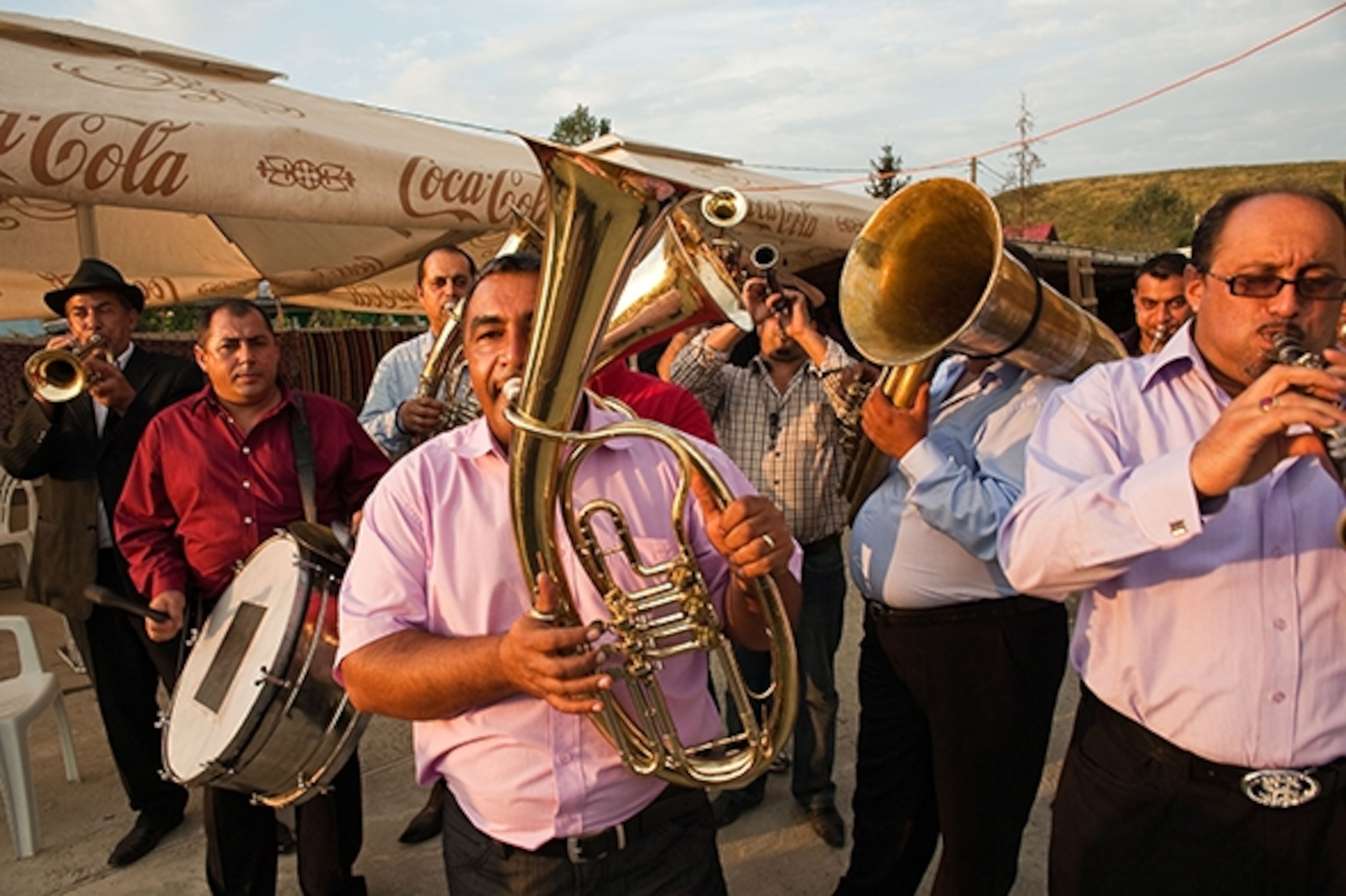
A Rough Guide to Roma Music
With a violin, a cimbalom, and some brass, Roma musicians play songs of love and loss. Here’s an insider’s guide to the constantly evolving cultural tradition. Make sure to read the lovely feature article that accompanies this primer, Roma Rhapsody: A Musical Journey Into the Heart of Romania.
> Essential Listening:
- Fanfare Ciocărlia’s album Live captures the intensity of the group’s live concert performances.
- Masters of Roma instruments, Taraf de Haïdouks plays classical music by famed composers such as Béla Bartók and Aram Khachaturian on the album Maškaradǎ.
- The compilation album Transylvanian and Moldavian Fiddlers includes more than 20 tunes from the Szászcsávás Band and other musicians from Hungarian-speaking parts of Romania.
- On the album Ghetto Blasters, Bucharest-based ensemble Mahala Raï Banda mixes traditional Roma music with 21st-century urban energy and party-starting playfulness.
> What to Read:
Isabel Fonseca’s Bury Me Standing (1995) is a captivating history of the Roma and their plight in eastern Europe. The title comes from a Roma adage: “Bury me standing; I’ve been on my knees all my life.”
> Experience Roma Music in Person:
Several organizations lead Roma music trips to Romania. Among the best is German company Transylvania Active and Cultural Travel, which runs tours in English and works in cooperation with the Asphalt Tango music label. Travelers stay some nights with Roma families.
> Photo Tip: Don’t be shy.
While attending a Gypsy music concert, you will probably get very close to the performers, so don’t forget to bring your wide lens, says photographer Bogdan Croitoru.
The performers may even draw you into the dance circle, tickling you with the bow of a violin. These are the best moments for taking pictures, face to face, not hiding but laughing and shooting pictures.
> Travel Trivia:
- Roma musician Toni Iordache (1942-1988), nicknamed “Paganini of the cimbalom,” was able to play 25 notes per second.
- The English word “pal” is borrowed from a Roma word meaning “brother.”
- In Bram Stoker’s novel Dracula, Roma serve as allies of the bloodthirsty count—evidence of their outcast status in the late 19th century.
This piece originally appeared alongside the feature “Roma Rhapsody” in the February/March 2014 issue of National Geographic Traveler magazine.
> Related:
You May Also Like
Go Further
Animals
- Orangutan seen using plants to heal wound for first timeOrangutan seen using plants to heal wound for first time
- What La Palma's 'lava tubes' tell us about life on other planetsWhat La Palma's 'lava tubes' tell us about life on other planets
- This fungus turns cicadas into zombies who procreate—then dieThis fungus turns cicadas into zombies who procreate—then die
- How can we protect grizzlies from their biggest threat—trains?How can we protect grizzlies from their biggest threat—trains?
- This ‘saber-toothed’ salmon wasn’t quite what we thoughtThis ‘saber-toothed’ salmon wasn’t quite what we thought
Environment
- What La Palma's 'lava tubes' tell us about life on other planetsWhat La Palma's 'lava tubes' tell us about life on other planets
- How fungi form ‘fairy rings’ and inspire superstitionsHow fungi form ‘fairy rings’ and inspire superstitions
- Your favorite foods may not taste the same in the future. Here's why.Your favorite foods may not taste the same in the future. Here's why.
- Are the Great Lakes the key to solving America’s emissions conundrum?Are the Great Lakes the key to solving America’s emissions conundrum?
- The world’s historic sites face climate change. Can Petra lead the way?The world’s historic sites face climate change. Can Petra lead the way?
History & Culture
- Meet the ruthless king who unified the Kingdom of Hawai'iMeet the ruthless king who unified the Kingdom of Hawai'i
- Hawaii's Lei Day is about so much more than flowersHawaii's Lei Day is about so much more than flowers
- When treasure hunters find artifacts, who gets to keep them?When treasure hunters find artifacts, who gets to keep them?
Science
- Why ovaries are so crucial to women’s health and longevityWhy ovaries are so crucial to women’s health and longevity
- Orangutan seen using plants to heal wound for first timeOrangutan seen using plants to heal wound for first time
- Should you be concerned about bird flu in your milk?Should you be concerned about bird flu in your milk?
Travel
- 5 of Uganda’s most magnificent national parks
- Paid Content
5 of Uganda’s most magnificent national parks - On this Croatian peninsula, traditions are securing locals' futuresOn this Croatian peninsula, traditions are securing locals' futures
- Are Italy's 'problem bears' a danger to travellers?Are Italy's 'problem bears' a danger to travellers?
- How to navigate Nantes’ arts and culture scene
- Paid Content
How to navigate Nantes’ arts and culture scene




